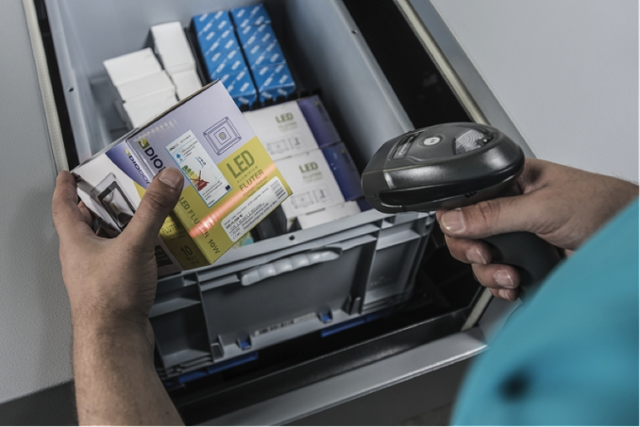
Contant market evolution brings about crisis situations and caos, which require from those in charge of the logistics areas to redesign new scenarios and optimization methods that translate into a more effective, efficient and capable integrated solution so as to address the ever-growing and increasingly-complex market needs.
Current demands are often more and more individual, fast, and dynamic. The review of system processes and selection of a system more suited for your operational requirements is a true challenge. This is why we suggest keeping in mind the following points to consider when looking for an Order Assortment System:
1.- Identify the need to be resolved
Often, we confuse the means with the ends. When clearly defining the bottomline problem to resolve, the different ways to solve the problem will become more apparent.
As simple as this apparently subtle recommendation may seem at first, it is a powerful tool to prevent future headaches for the entire organization.
2.- Document all information and define the operation in figures
If you find yourself unable to define specific figures for the operation, it will be very unlikely to correctly assess its efficiency and, thus, to optimize it. Gather statistics regarding capacity, productivity, order sizes, order frequency, stationality roatation,s sizes, and weights; as well as SKUs by shift, by month, or total SKUs; among other significant aspects.
To document relevant information, you may also brainstorm with your teammmates considering their contributions, and contemplating pros and cons.
3.- Implement processes
Implementing processes is the step previous to automation, and determines which processes should take place, combining efficacy and simplicity. Keep in mind that the more complex a process or system is, the less it will be understood and, therefore, let them flow and provide the necessary technological support to optimize them.
4.- Consider the different technologies that may resolve your clients’ requirements
Solutions may range basic equipment such as shelving to sophisticated order assortment systems (AR/RS, shuttles, Put to Light, and AGVS, among others). You don’t need to be an expert on each of these available technologies, but should at least be familiar with these solutions up to a certain depth so as to consider them as alternatives to resolve your concerns.
5.- Determine the type of product supplied and how many SKUs are assorted
Defining the type of product is crucial to define the assortment system, distinguishing between wood planks, creates, or parts.
Likewise, it is important to keep in mind inventory rotation, and be informed of the amount of SKUs assorted, since the flow and rate will determine the system or systems to be implemented to improve efficiency in order assortment, whether Pick to Light, Pick to Voice, Carousels, A-Frame, etc.
6.- Know your customer
This type of business demands that all shipments adapt to the clients’ solutions. Usually, suppliers have a great number of customers and, consequently, a wide variety of delivery needs for each of them. Consolidation and routing mark the need to implement specific automation methods for such purpose.
7.- Be familiar with the input and output flows
It is important to determine the flow on both inputs and outputs, taking into account normal and maximum output seasons.
In the case of inputs, it is important to establish the daily need of trucks per day, the SKU pallets, crates, and shifts handled.
On the other hand, in regards to outputs, take into account the different internal movements within a CEDIS (storage, replentishment, picking, sorting, consolidation, and shipping), same which require a detailed analysis and a balance between the different operations so as to avoid bottle necks, saturating, or lacking staff to complete them.
8.- Know how long the Order Assortment process takes
As you may know, one of the purposes of order assortment is increasing productivity through time optimization. Thus, it is recommended to measure the total time of order processing by taking into account the time spent from order reception or customer instructions to distribution or order assortment while, on the other hand, also analyzing the time occurred from the moment of packing and consolidation to truck loading.
Keep in mind the analysis of actual times, which will allow evaluating and rating future solutions on storage, picking, VAS, and order consolidation to further implement, since this will provide for a time comparison between before and after implementation.
9.- Get advice from a specialized institutional organization
The most recommended tip is to make sure to be properly informed and adviced by professionals. The installation of a proper order management system is not enough; a true aftermarket service support is required to guarantee effectiveness and prevent mistakes; thus, make sure to have a robust local support.
In short, by keeping in mind the following aspects, you will contribute to optimize your order assortment, achieving considerable benefits in terms of productivity, time saving, and costs reduction; while also reducing the rate of sorting errors.
In GIEICOM we are experts in the desig of intelligent logistics solutions fully adapted and focused on the specific requirements and needs of our customers. Contact us so we can help you design an order assortment project, or sortinf, that may translate into substantial business profits.
Collaboration:
Agustín García & Edgar Herreño



